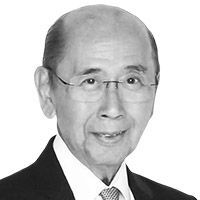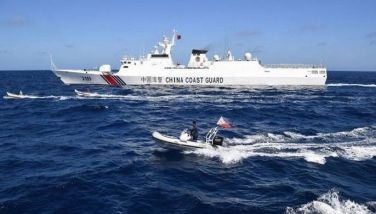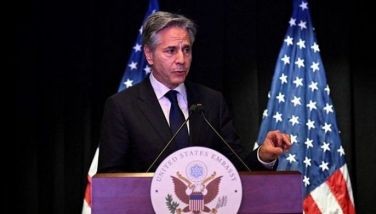Filipino worldview: Ave atque vale


MANILA, Philippines - Translated literally, it means “Hail and Farewell.” The poet Gaius Valerius Catullus used the couplet as a tribute to his brother who had recently passed away. The modern translation is, “I salute you and goodbye.” It is in this context that I apply this to departing US Ambassador to the Philippines Philip Goldberg. I salute him for his great contribution to bettering the lives of Filipinos in more ways than one and bid him farewell on his next journey in his storied career. Sadly, he leaves today not only unappreciated by the Duterte administration but on the receiving end of presidential scorn.
In addition to the work that goes with being the top diplomat of a world superpower with one of its closest allies in the region which is the Philippines, Phil was very much engaged in contributing to community building, realizing that the soul and strength of a nation lies in its culture and national identity. He made it his personal mission to contribute to preserving our cultural heritage.
During his tenure, he donated more than $800,000 for cultural preservation. Some of these projects include the restoration of the early 18th-Century La Immaculada Concepcion Church in Guiuan, Eastern Samar; the San Sebastian Basilica conservation project, the preservation of the Mangyan syllabic script ‘Baybayin’ and the documentation, transcription, translation and publication of the country’s greatest epic, “Dulimaman,” by the Itneg tribe.
In education, a total of 1,000 exchange participants in all categories including Fulbright scholars were processed during Goldberg’s tenure.
Credit should also be given to Phil for the implementation and completion of the $450-million Millennium Challenge Corporation compact which resulted in the construction of a major road in Samar.
It was, however, Typhoon Yolanda that demonstrated Phil’s care and sympathy for the Philippines. He was the first to respond. His personal efforts together with the Defense and State Department and USAID generated $143 million in assistance on the ground.
At its peak, the US military efforts included more than 13,400 military personnel, 66 aircraft (including 10 C-130s to augment the AFP’s three aircraft along with 8 MV-22 Ospreys) and 12 naval vessels. The Americans delivered more than 2,495 tons of relief supplies and evacuated 21,000 people.
More than 1,300 flights were completed in support of the relief efforts to approximately 450 sites. American emergency humanitarian aid immediately following the typhoon helped feed at least 3 million people. They provided basic emergency shelter materials, such as plastic sheeting, tents, tools and rope, to approximately 151,000 households across affected areas. In addition, nearly 38,000 households received support for self-recovery efforts through shelter repair kits, cash transfers and construction materials.
The US was not the only donor during the Yolanda typhoon: the Western countries donated $331 million. The United Kingdom donated $121 million, Australia $64 million, Japan $63 million, Canada $58 million, Germany $40 million and Norway $32 million. Amidst the dispute over the West Philippine Sea, China initially gave $200,000 but upped this to $2 million following criticism for its paltry contribution. Later on, they deployed a hospital ship as it tried to recover from the blow to its image as a regional power.
Disaster relief, by its very nature, is offered without conditionalities and none more illustrative of this than during the massive outpouring of aid following Typhoon Yolanda. This is why I am a little perplexed when, after the devastation wrought by Typhoon Lawin, the President and other government officials felt the need to declare that we do not need any help or that if it comes, there should be no conditions. DSWD Secretary Judy Taguiwalo said we do not need any foreign aid to deal with the disaster. A day later, faced with a barrage of criticism for misplaced pride at the expense of the victims who needed all the help they can get, she backtracked and said yes, we welcome foreign assistance but added the caveat “as long as there are no conditionalities.” Then after newfound friend China donated $2 million for Typhoon Lawin relief, President Duterte proudly announced that the aid had no strings attached to it. Was it a coincidence that this burst of generosity happened after the President’s visit where the ruling of the Arbitration Tribunal in favor of the Philippines was glossed over to avoid upsetting the host?
This brings me to the seemingly cavalier dismissal of the sustained assistance that the US has been giving the Philippines for the past 70 years as the government’s new “independent foreign policy” pivots towards China and her promised billions. Looking at the numbers just for the last few years, they are not insignificant. The US has donated $240 million in disaster assistance over the last 10 years; a total of $1 billion in assistance was provided by the State Department and USAID (2011-2016); and $50 million for FMF (Foreign Military Assistance) plus $42 million for Maritime Security Assistance in fiscal year 2016.
Many of the USAID projects are in health, education and community development – the precise interventions into the root cause of drug abuse. Unlike the highly publicized loans recently given by the Chinese, it should be noted that the Americans have given grants.
The US contribution to the country’s economic growth cannot also be easily dismissed. The US is our second biggest export market for merchandise, generating a trade surplus of $600 million annually.
For services exports, the BPO industry alone accounted for $25 billion in revenue, of which 77 percent was accounted for by the US. In terms of remittances from Filipinos working overseas, the US was the biggest source, representing over 31 percent of the total of $25.8 billion in 2015. As for net foreign direct investment, the US contributed 34 percent of all FDI in 2011-2015, with Japan coming in second at 23.7 percent.
I hope our leadership realizes before it is too late that “cutting off your nose to spite your face” is never a good policy.
- Latest
- Trending






























